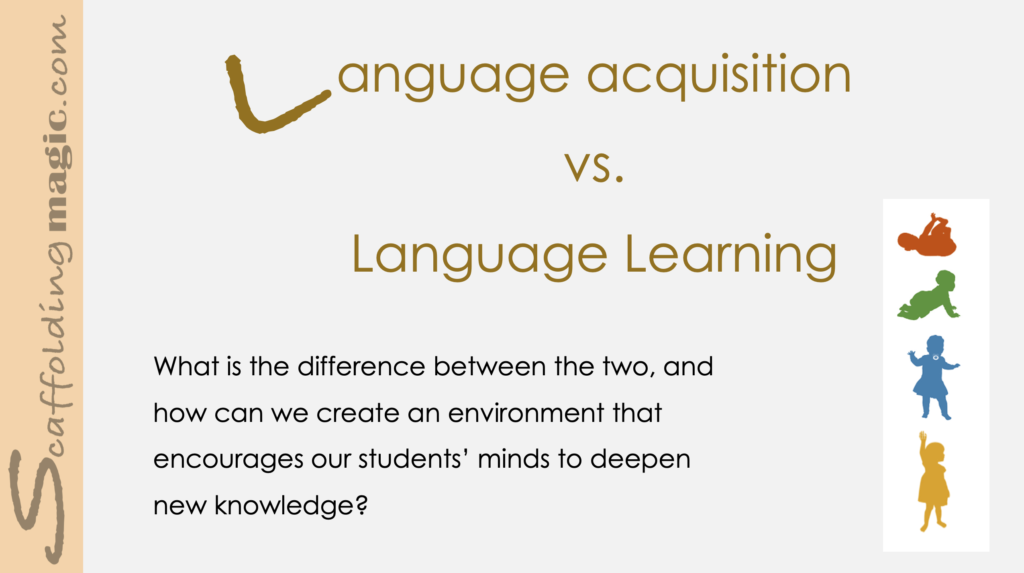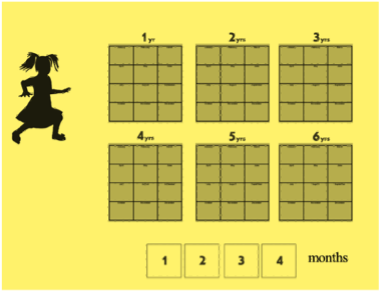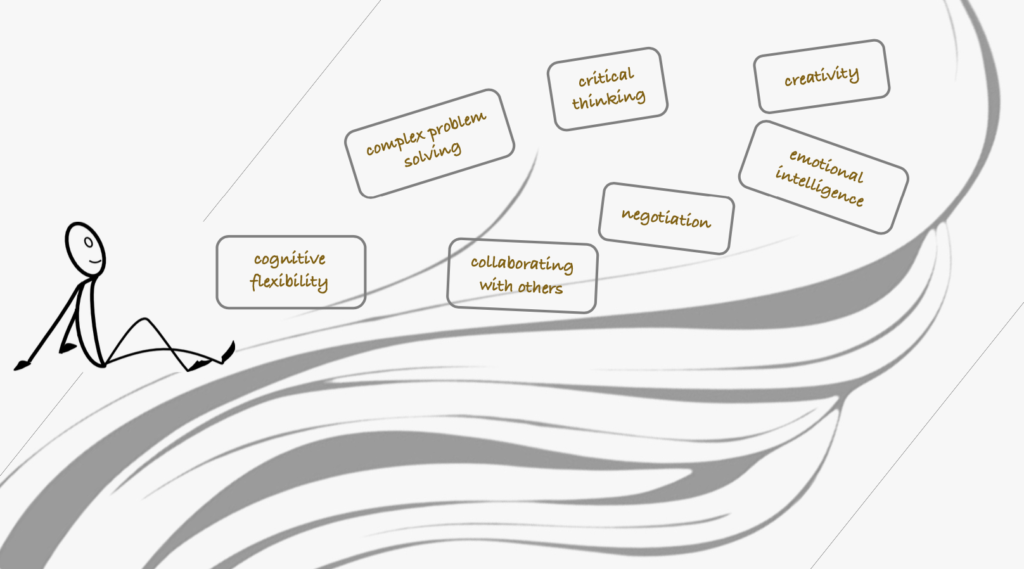
Download PDF of blog here.

As humans, most of us follow the same pattern in language development:
- at 3-5 months, we can make our own sounds and/or, if taught sign language, we can begin to make ourselves understood with our hands.
- at 12-18 months, we begin using holophrases (one-word sentences – and those of you who have, or work, with young children, you know how powerful that one word can be!)
- at 35 years, most of us have acquired the basic grammatical structure of our home language/s that most resembles adult speech

This means that, if we assume that a child is exposed to language for at least six hours a day, by the time she is six years and four months old, she will have been learning and using her home language/s for 13,797 hours.* This is what is called language acquisition – the natural assimilation of language. This occurs, for instance while speaking with family at the dinner, table, getting ready for school, buying food at the store, negotiating computer time, talking on the phone, playing with friends in the park, reading books at night, watching television and movies, etc. We are probably not consciously aware of grammatical rules in these circumstances, but rather we develop a sense of correctness through practice.
Language learning is usually decidedly different. In most language classrooms, we learn languages, which means that the focus is on the conscious study and knowledge of the classroom language – learning rules of grammar, learning to become aware of whether we have used rules correctly or not, learning to talk about rules. Language learning is unnatural, laborious and in most classes, presented in a generally demotivating manner.
Why is it so important to make the distinction? Well, on the one hand, if we remind our students how they acquired their home language – that they have been actively learning it naturally, holistically, since they were born and that it did not simply appear in their minds and out of their mouths – they might become more patient with themselves regarding the process of learning the classroom language. After all, dedicating three to four hours a day of class time learning any given language is obviously very different from the thousands of hours acquiring their home language.
There is an even more practical reason in understanding the difference between language acquisition and language learning. As teachers, we can include the natural ways we acquire home language/s in our lessons.
For instance, one student learns best by speaking, so we introduce a unit on geometry with a scaffold in which students work in pairs and verbally describe why one shape is different from another. We have another student who learns best by touching and moving things, so we begin a literature class with a scaffold of a puzzle in which we embed the definitions of key academic language of the story our students are about to read. (See puzzle to the right.) A third student learns best by writing, so you introduce a unit on art history with a scaffold of brain writing.

There’s another way that’s even more effective. Now, don’t panic because it may seem extreme at first! The most effective method to recreating holistic language acquisition in the classroom is project-based learning, or Phenomenon-Based Learning projects to be even more precise. For those of you reading this during or after the current global crisis, you may already know that many educational systems world-wide recognise the effectiveness of project-based learning as the most viable way of engaging students in their studies and acquiring the classroom language – especially in virtual classes.
If we move into Phenomenon-Based Learning, then the real world is intentionally brought into the lessons, the information is multi-cultural, interdisciplinary, students work collaboratively and learn to make decisions that they test as they proceed, and acquiring the language becomes a fusion of their passion and excitement for the subject and their need to learn how to express themselves; it then necessarily becomes more divorced from conscious learning of rules.
The traditional method of a dividing and isolating content learning from language has a very low influential factor in the face-to-face model of education, but even less when studying online. Project-based learning approaches information more holistically and so, in theory, more naturally.
The possibilities of including holistic elements in our lessons are virtually endless. Whether through scaffolds activities or projects that begin with scaffolding activities, we quickly become aware of the difference between language acquisition and language learning – mostly through the smiles and engagement of our students.
Have FUN in your classes and see you soon for more!!
- Affect in Foreign Language and Second Language Learning, Jesuisita Young, Dolly (p. 94).

Scaffoldingmagic.com is your entryway into DYNAMIC bilingual learning methodologies, such as Phenomenon-Based Learning, CLIL, EMI, and ESL. You’ll find ways to implement critical thinking tools (DOK) to promote higher level thinking, the growth mindset, instill an ethic of excellence, deep reflection on learning, and all through multi-cultural, interdisciplinary activities. We have the keys to turning competences into action and to creating collective efficacy in your school so you move ahead as a unified, enthusiastic team.